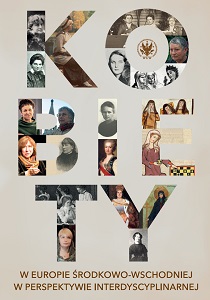Женщина и морально-аскетический идеал в Древней Руси (XI–XIII вв.)
Women in the Moral and Ascetic Ideal of Old Rus’ (11th-13th centuries)
Author(s): Justyna Kroczak
Subject(s): Cultural history, Studies of Literature, Theory of Literature
Published by: Wydawnictwa Uniwersytetu Warszawskiego
Keywords: philosophy of asceticism; Desert Mothers; Euphrosyne of Polotsk; Euphrosyne of Suzdal; Macrina the Younger
Summary/Abstract: Both the history of Christianity and its theology suggest that asceticism tends to turn into a kind of art while the ascetic becomes “the artist of God”. The early Christian anchorites, or Desert Fathers (and to a lesser extent Desert Mothers), were the very such artists. They shaped a certain moral and ascetic ideal, which, via Byzantine culture, had a particularly strong influence on the Old Russian mind. It was this type of Christian practical philosophy from which the Old Rus’ Christianity evolved. Some view the philosophy of ascetics as a “dark doctrine” (Nikolay Nikolski), but it had the capacity to perform some culture-forming functions: to shape a new (relative to pagan) religious worldview and to instil a new aesthetic sensitivity. What place did women take in this process? Did the writings available in Old Rus’ at the time (e.g., Life of Maria of Egypt, Paterik) have any female role models? Did they in any way influence either the bookmen or the women of Old Rus’? Does the history of Old Rus’ know examples of women who fit this ascetic and moral ideal? In the end, did these women influence the old Rus’ Christian worldview and the concepts of the Eastern Slavonic Orthodox philosophy? I will try to answer these and other questions in the article.
Book: Kobiety w Europie Środkowo-Wschodniej w perspektywie interdyscyplinarnej
- Page Range: 37-47
- Page Count: 11
- Publication Year: 2020
- Language: Russian, Polish, Ukrainian
- Content File-PDF

